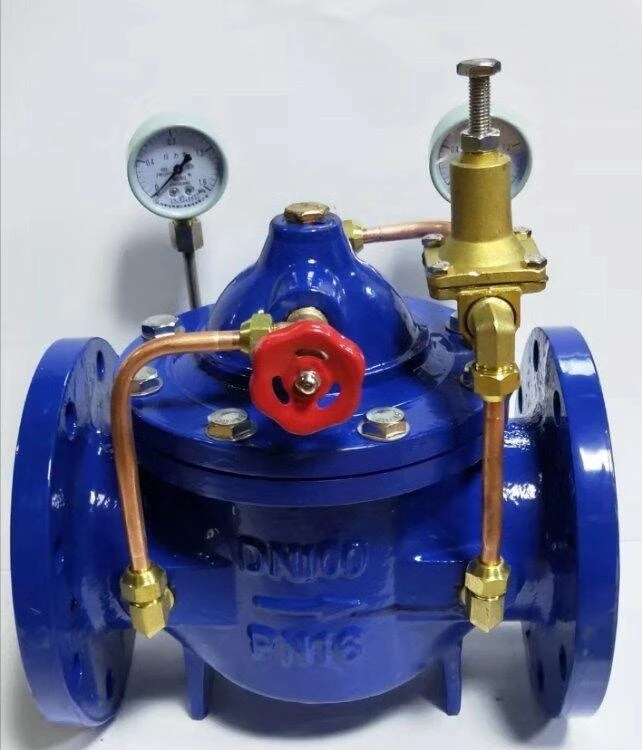dec. . 20, 2024 23:16 Back to list
water shut-off valve
Understanding Water Shut-Off Valves Importance, Types, and Installation
Water shut-off valves are essential components in any plumbing system, serving as critical control points for managing water flow. A shut-off valve is designed to stop or regulate the flow of water through pipes, making it easier to carry out repairs and maintenance without flooding or damaging property. This article will delve into the functionality, types, and installation processes of water shut-off valves, shedding light on their vital role in home and commercial plumbing.
Importance of Water Shut-Off Valves
Water shut-off valves are crucial for several reasons. Primarily, they allow for quick access to water control in emergencies. In the event of a leak or pipe burst, turning off the water supply can prevent extensive damage and high repair costs. Other situations that may necessitate the use of a shut-off valve include routine maintenance, appliance repairs, or system upgrades.
Moreover, these valves contribute to water conservation efforts. By identifying and addressing leaks promptly, homeowners can reduce water waste and lower their utility bills, supporting sustainable practices.
Types of Water Shut-Off Valves
There are several types of water shut-off valves, each with its unique design and application. Understanding the different types can aid in selecting the right valve for specific needs.
1. Ball Valves Known for their durability and reliability, ball valves feature a spherical disc that controls the flow of water. When the ball is positioned to allow water to flow, it is considered open. Conversely, turning the valve 90 degrees stops the flow entirely. Ball valves are suitable for both residential and commercial use, as they provide tight sealing and quick operation.
2. Gate Valves These valves operate by lifting a gate to allow water to pass through. While they are effective for fully opening or closing the water flow, gate valves are not ideal for regulating volume. They are typically used in larger applications where water flow needs to be completely turned on or off.
3. Globe Valves Globe valves are designed for regulating water flow, featuring a spherical body that allows for precise control. They are suitable for applications requiring throttling and are often used in heating and cooling systems.
4. Check Valves Though not traditional shut-off valves, check valves prevent backflow in plumbing systems. They ensure that water flows in only one direction, protecting the system from contamination and damage.
5. Stop Valves Commonly found in residential homes, stop valves control water flow to fixtures and appliances. They are typically located under sinks or behind toilets, allowing homeowners to perform repairs without shutting off the entire water supply.
water shut-off valve

Installation of Water Shut-Off Valves
Installing a water shut-off valve can be a straightforward task, provided one has the right tools and knowledge. Here’s a step-by-step guide for a basic installation
1. Gather Tools and Materials Common tools include a pipe wrench, tube cutter, Teflon tape, and the chosen shut-off valve. Ensure you have appropriate fittings compatible with your existing pipes.
2. Turn Off the Main Water Supply Before beginning any work, shut off the main water supply to prevent flooding.
3. Locate the Installation Point Determine where the valve will be installed. Ideally, it should be easily accessible. Common locations are near water meters, under sinks, or at the entrance of appliances.
4. Cut the Existing Pipe Using a pipe cutter, carefully cut the water line where the valve will be installed. Ensure that the cut is clean to provide a good seal.
5. Install the Shut-Off Valve Fit the valve onto the cut pipe ends and secure it using appropriate connectors. Wrap Teflon tape around threaded connections to ensure a watertight seal.
6. Test for Leaks After installation, turn the main water supply back on and check for any leaks around the new valve.
7. Label the Valve For future reference, consider labeling the shut-off valve. This can save time in emergencies, helping you quickly locate it.
Conclusion
In conclusion, water shut-off valves are an indispensable part of plumbing systems, helping to manage water flow, prevent damage, and enable efficient repairs. By understanding their types and installation processes, homeowners and property managers can maintain their plumbing systems more effectively. Integrating regular inspections and prompt maintenance can prolong the life of shut-off valves, ensuring their reliability when most needed.
-
Precision Manufacturing with Advanced Spline Gauge DesignNewsJul.31,2025
-
Industrial-Grade Calibrated Pin Gauges for Exact MeasurementsNewsJul.31,2025
-
Industrial Filtration Systems Depend on Quality Filter DN50 SolutionsNewsJul.31,2025
-
High-Performance Gate Valve WholesaleNewsJul.31,2025
-
Granite Surface Plate The Ultimate Solution for Precision MeasurementNewsJul.31,2025
-
Granite Industrial Tools The Ultimate Guide for Bulk BuyersNewsJul.31,2025
Related PRODUCTS









